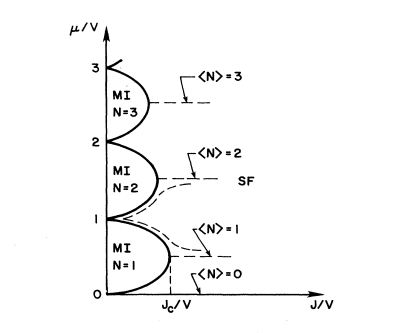Bose Hubbard model: Difference between revisions
Jump to navigation
Jump to search
JoeBelarge (talk | contribs) No edit summary |
JoeBelarge (talk | contribs) No edit summary |
||
| Line 14: | Line 14: | ||
=== First Experiment (Nature Paper) === | === First Experiment (Nature Paper) === | ||
The first experimental evidence in support of the BHM was observed in 2002. Greiner and collaborators (Nature paper, need to cite) created a <math>^{87}Rb</math> | The first experimental evidence in support of the BHM was observed in 2002. Greiner and collaborators (Nature paper, need to cite) created a <math>^{87}Rb</math> Bose-Einstein condensate | ||
==References== | ==References== | ||
<references/> | <references/> | ||
Revision as of 12:18, 14 December 2012
Introduction
The Bose-Hubbard Model (BHM) was first studied in detail in 1989 by Fisher et al. (need to cite phys rev b article by fisher et al.) They studied a three dimensional Bose gas in several different types of systems, including the most simple case at zero temperature. --> This is just an idea, I havent finished it yet, and dont know if it is necessary so let me know what you guys think about it.
Hamiltonian
Solving the Hamiltonian
Phase Transition
Experimental Evidence of BHM
First Experiment (Nature Paper)
The first experimental evidence in support of the BHM was observed in 2002. Greiner and collaborators (Nature paper, need to cite) created a Bose-Einstein condensate

